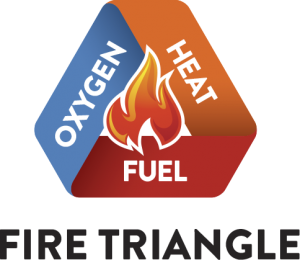FAQ CATEGORY: Fire Safety
Fire Safety
Without an effective fire suppression system, a dust collector could become a meeting point for the three components of any fire: a fuel source, oxygen and an ignition source. Fortunately, effective systems exist to protect both workers and equipment.
The best fire suppression system is an internal one, rather than simply relying on a facility’s sprinklers and fire extinguishers. The latter create a lot of mess and do little to prevent damage to a dust collector itself. Integrated fire suppression devices protect equipment, workers and production lines much more effectively than other measures.
The most common types of internal fire protection systems are water sprinkler systems and CO2 gas systems. A water sprinkler system extinguishes the fire, while a CO2 gas system suppresses the fire until first responders are able to put it out. A CO2 gas fire suppression system is typically paired with an automated damper system to shut off airflow to the dust collection unit in the case of a fire. The system can also automatically turn off the blower. These actions cut off the flow of oxygen and kill a fire before it spreads.
Learn more about dust collector fire suppression options.
A spark arrestor is a device that kills sparks before they can cause problems in a dust collector or other piece of equipment. Sparks are a common cause of fires in ductwork and dust collectors—providing one of the three necessary components of a fire: a fuel source, oxygen and an ignition source. If sparks are not stopped, they can ignite dusty filters or dust that is present in ductwork.
Sparks are a common feature of welding, grinding and metal cutting, so it is imperative that an active approach is taken to stopping them. A spark arrestor, such as RoboVent’s Delta3™ Spark Arrestor, catches and kills sparks before they can hit a filter. The Delta3™ does this by using centrifugal force to fling sparks and embers against the outer wall of the device, pulling of their thermal envelop so that they are rapidly cooled and extinguished. Testing has shown that this device kills 99.9% of sparks.
Using a spark arrestor can prevent catastrophic fires that might start in your dust collector and spread throughout your facility, as well as smaller fires that might put your dust collector out of commission for a day or two. These fires could shut down production lines that depend on the dust collectors. Cleaning up after fires is also a major burden for maintenance staff. A spark arrestor can avoid these problems, ensuring worker safety and saving money.
There are several methods available to reduce the risk of a dust collector fire. Fire prevention and mitigation for dust collectors should include:
- Spark arrestance (if near spark-producing processes) to minimize ignition risks in the ductwork and dust collector filter chamber.
- Installation of a fire/smoke detector that will sound an alarm and stop the collector if a fire is detected in the collector. This may be combined with a damper system to shut off airflow to the collector.
- A fire suppression/extinguishing system. This may be a water-based sprinkler system, a carbon dioxide gas (CO2) system, or a clean agent gas system such as RoboVent’s Supprex-200 system.
Spark arrestance is one of the best ways to lessen the risk of a dust collector. These systems prevent sparks from reaching the filter chamber to ignite a thermal event. There are three basic approaches to spark control for dust collection systems:
- Metal mesh or baffle systems that mechanically block sparks from entering the ductwork or dust collector intake.
- Centrifugal spark arrestance systems, which use centrifugal force to strip the thermal envelope from sparks.
- Detect-and-suppress systems, which use a sensor that activates a water- or chemical-based suppression system.
Detect-and-suppress systems provide near 100% spark reduction, but are very expensive to install, operate and maintain. Water or chemicals used to extinguish sparks may also interfere with production processes. They are typically used for explosive environments and other high-risk applications.
Mesh and baffle systems stop a majority of sparks, but not all. In addition, metal mesh spark traps require frequent cleaning to maintain efficient airflow and avoid the risk of a fire caused by buildup of flammable material on the screens.
A centrifugal spark arrestor, like the Delta3 Inline spark arrestor, is an excellent choice for most applications that produce a significant number of sparks. Sparks are extinguished by the centrifugal action, which forces burning embers against the walls of the device. When high airflow is maintained, most debris is cleaned out of the system, minimizing maintenance. In head-to-head tests against industry leaders, Delta3 Inline allowed zero sparks through at all tested airspeeds and had the lowest pressure drop.

The causes of dust collector fires are summarized nicely by the “fire triangle.” This graphic includes the three primary components of a fire: a fuel source, oxygen and heat.
Unfortunately, a dust collector brings two of these elements together very efficiently: fuel and oxygen. Many dusts and fumes found in manufacturing facilities are combustible. If air quality is being properly controlled, these substances are likely being pulled into dust collectors. This, along with the filter media itself, is the fuel. A steady airflow through the dust collector ensures that oxygen is always present, as well. All that is left to produce a fire is a heat or ignition source.
Ignition sources are usually not hard to find in manufacturing facilities. Processes such as welding, grinding and metal cutting produce a steady stream of sparks, any one of which could start a fire. If these sparks are not extinguished before they hit the filter media, a fire could result.





